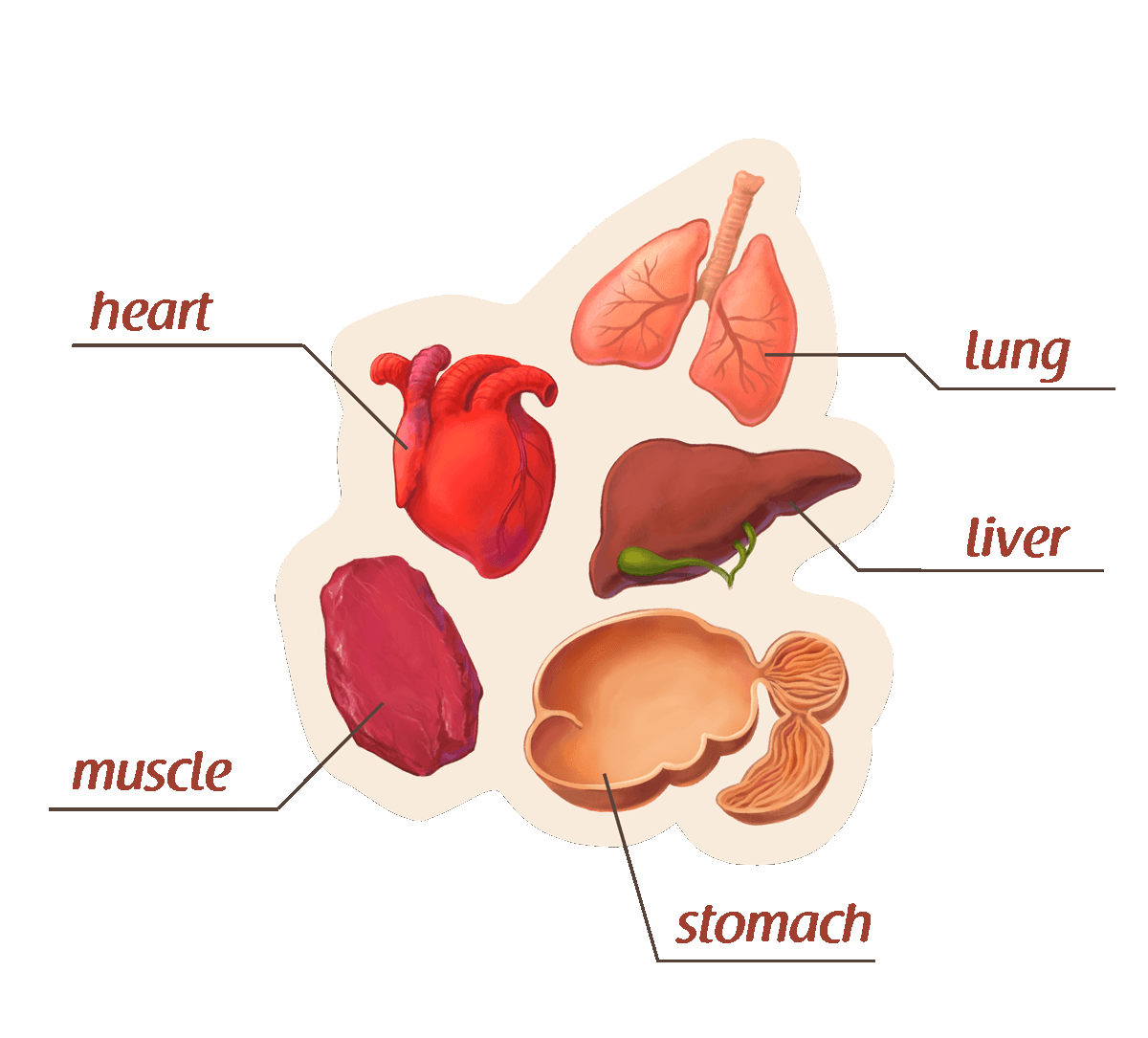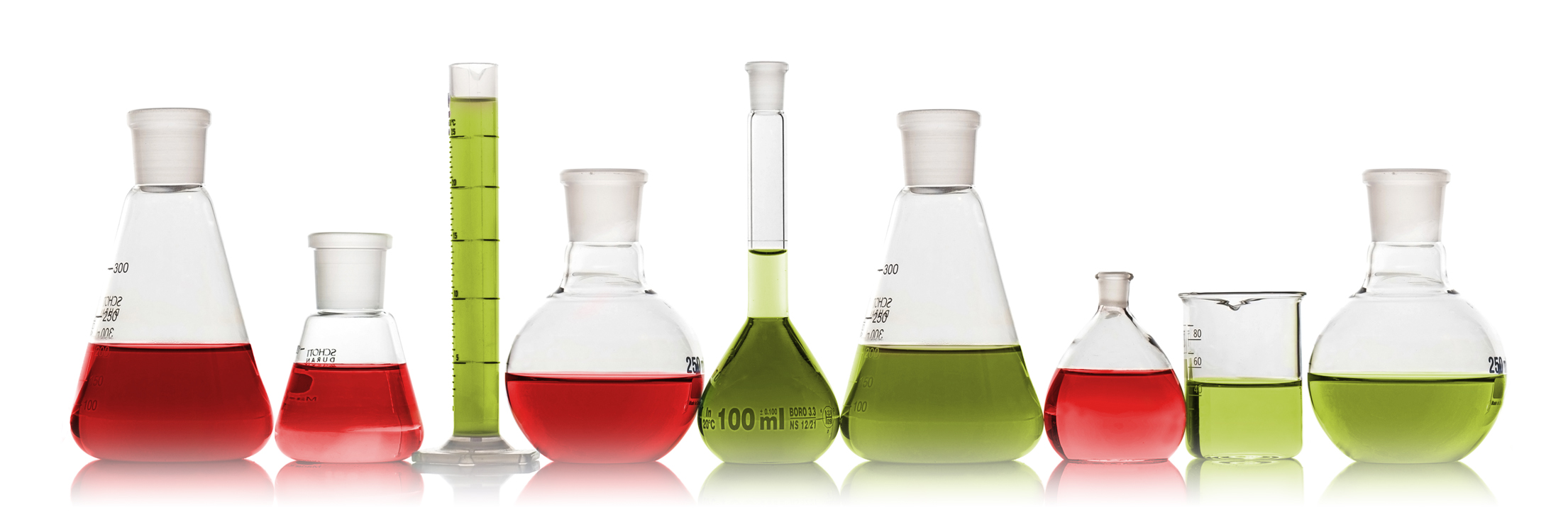Food lexicon
Meat & Offal - What's inside?

What's in the food?
Heart
Hearts have a comparatively low fat content, similar to very high-quality muscle meat. They contain various essential amino acids, particularly the essential amino acid arginine. Additionally, the heart is a good source of natural vitamin E.
Lung
The energy/protein ratio of the lung is particularly favorable, and it contains a lot of natural iron. The essential amino acid leucine is also found in the lung. Immediately after the liver and kidney, the lung is the best supplier of vitamin B2.
Liver
The liver is a natural source of vitamin A and rich in vitamin-like substances such as pantothenic acid and choline. The liver contains many important minerals and vitamins, including vitamin B2. In terms of protein content, the liver is nearly on par with high-quality muscle meat portions.
Muscle tissue / Muscle meat
Muscle tissue is particularly rich in protein and has a valuable amino acid profile. Additionally, muscle meat is considered highly digestible. Beef, lamb, and pork naturally contain relatively high amounts of lauric acid.
Stomach
The stomach contains natural calcium and magnesium, as well as easily digestible fats.
Definitions
Free radicals are dangerous metabolic byproducts that can form within the body or enter from the outside. Most radicals are quite short-lived but can cause significant damage in the organism—often directly within cells. Radicals can originate within cells (e.g., within the immune system to combat germs) or enter the body from the outside, such as through irradiated food particles, inhaling smoke, UV rays, or exposure to high heat.
Radicals are considered instigators of cell damage and are repeatedly discussed in relation to the development of cancer. Furthermore, they are involved in the exacerbation of many health conditions. Free radicals can also promote oxidations. This 'oxidative stress' is often associated with the aging process. The body protects itself through various defense and control systems against the harmful effects of radicals. The body's own mechanisms are effectively supported by antioxidative substances (antioxidants). Antioxidants are considered 'radical scavengers,' meaning they neutralize free radicals.

Analytical constituents
At the end of the 19th century, the Weende feed analysis was developed and is still used today to distinguish between various feedstuffs. Information regarding the analysis can be found on every feed package. It primarily serves as a guideline for comparing different feedstuffs.
Crude protein
The term 'crude protein' encompasses all nitrogen-containing substances in the feed. This includes proteins, as the name implies, as well as nitrite and nitrate compounds. The nitrogen content of the feed is determined using a specially developed chemical process and calculated using a formula. The Weende feed analysis does not provide information about the quality of the protein, only the quantity contained.
Crude fiber
Residue after treating the feed with acids and alkalis in a special analytical process is referred to as 'crude fiber.' What remains is the insoluble residue free from fat, nitrogen, and ash. It consists mainly of cellulose but also pentosans, lignins, and other fiber (exclusively of plant origin). The crude fiber value indicates the amount of fiber present in the feed. Similar to crude protein and crude ash, this value does not provide insight into the quality of these constituents.
Crude ash
Crude ash is the portion of feed that remains after being burned at a temperature of 550°C. The unburned constituents, or ash from oxidized minerals, reveal the amount of inorganic substances present in the feed. This value can serve as an indicator for the feed's mineral content. Contaminants like sand and dust can influence or distort this value. The pure percentage value of crude ash does not indicate anything about the quality of the protein.

